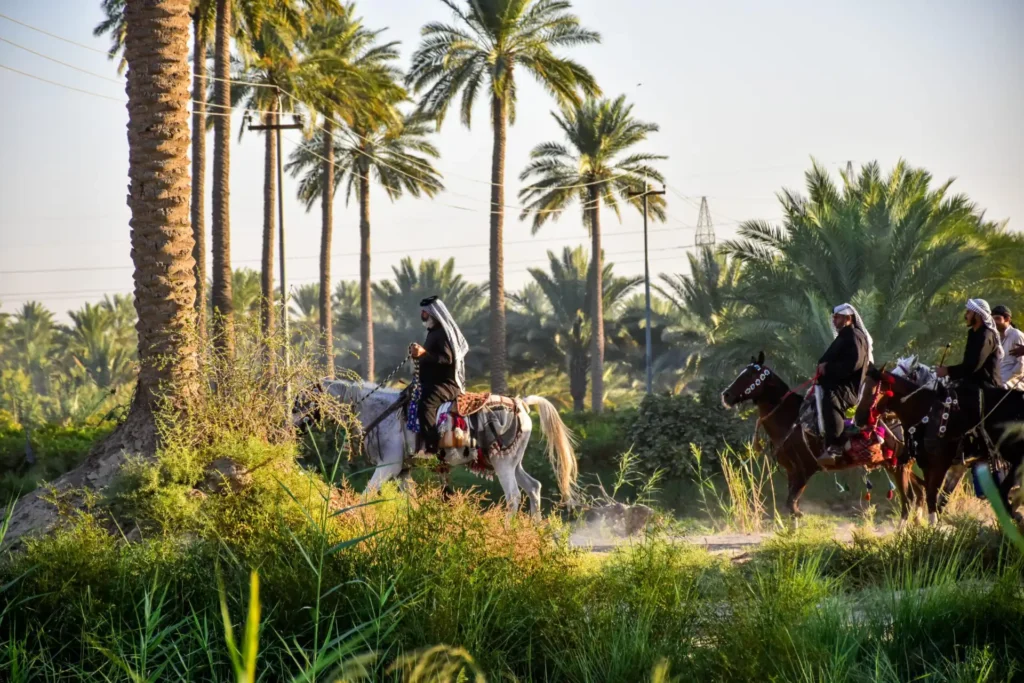
Iraq Currency – A brief history
What Is the Currency of Iraq?
The currency of Iraq is the Iraqi dinar, pronounced “dee-nahr.” It is the official currency used across Iraq for all transactions.
The Iraq currency symbol is ع.د, representing the Arabic letters for “عراقي دينار” (Iraqi dinar).
The Iraq currency code is IQD.
Whether you’re shopping in Baghdad or exploring the Kurdistan region, you’ll be using the Iraqi dinar.
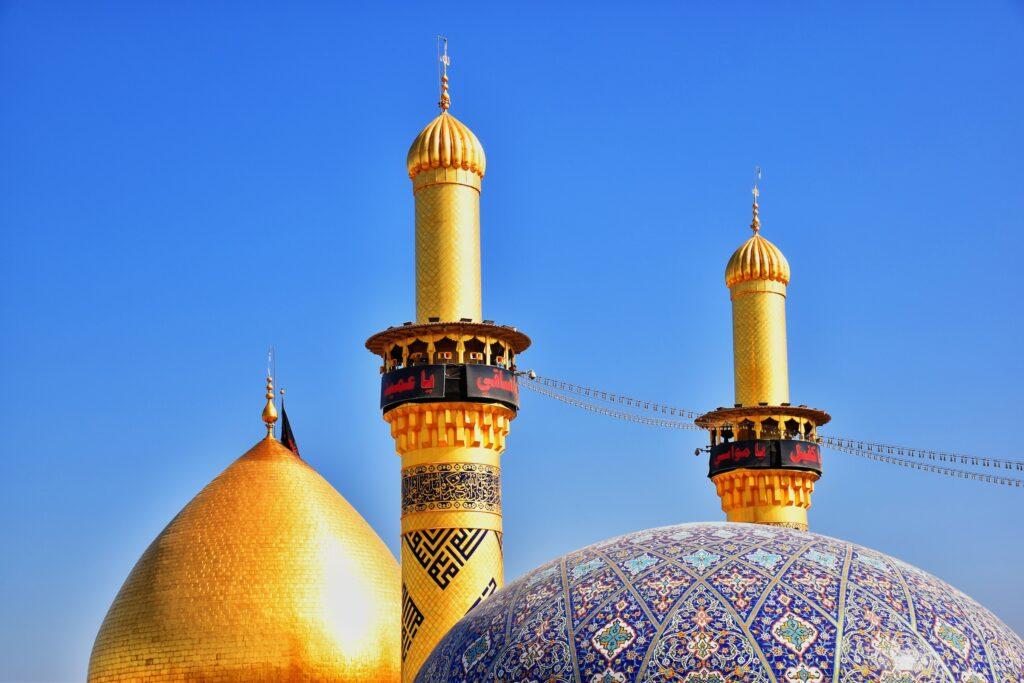
Buy your dinar now
Iraq’s currency history
Early 20th Century
Before Iraq gained independence, the British-controlled Mesopotamian region relied heavily on the Indian rupee.
The decision to eventually replace the Indian rupee marked a major milestone in establishing Iraq’s monetary sovereignty.
In 1932, the Iraqi government introduced the Iraqi dinar, pegged at par to the British pound (also known as the pound sterling).
This marked the birth of a single unified currency that reflected Iraq’s newfound independence as a modern state.
Initially, the Currency Board handled the monetary policy until 1947, when the Central Bank of Iraq was established to take control of issuing and regulating currency in Iraq.
The new Iraqi dinar currency, assigned the currency code IQD, began circulating with denominations of Iraq dinar notes and coins.
It had a strong start, backed by foreign reserves and close monetary ties with the United Kingdom.
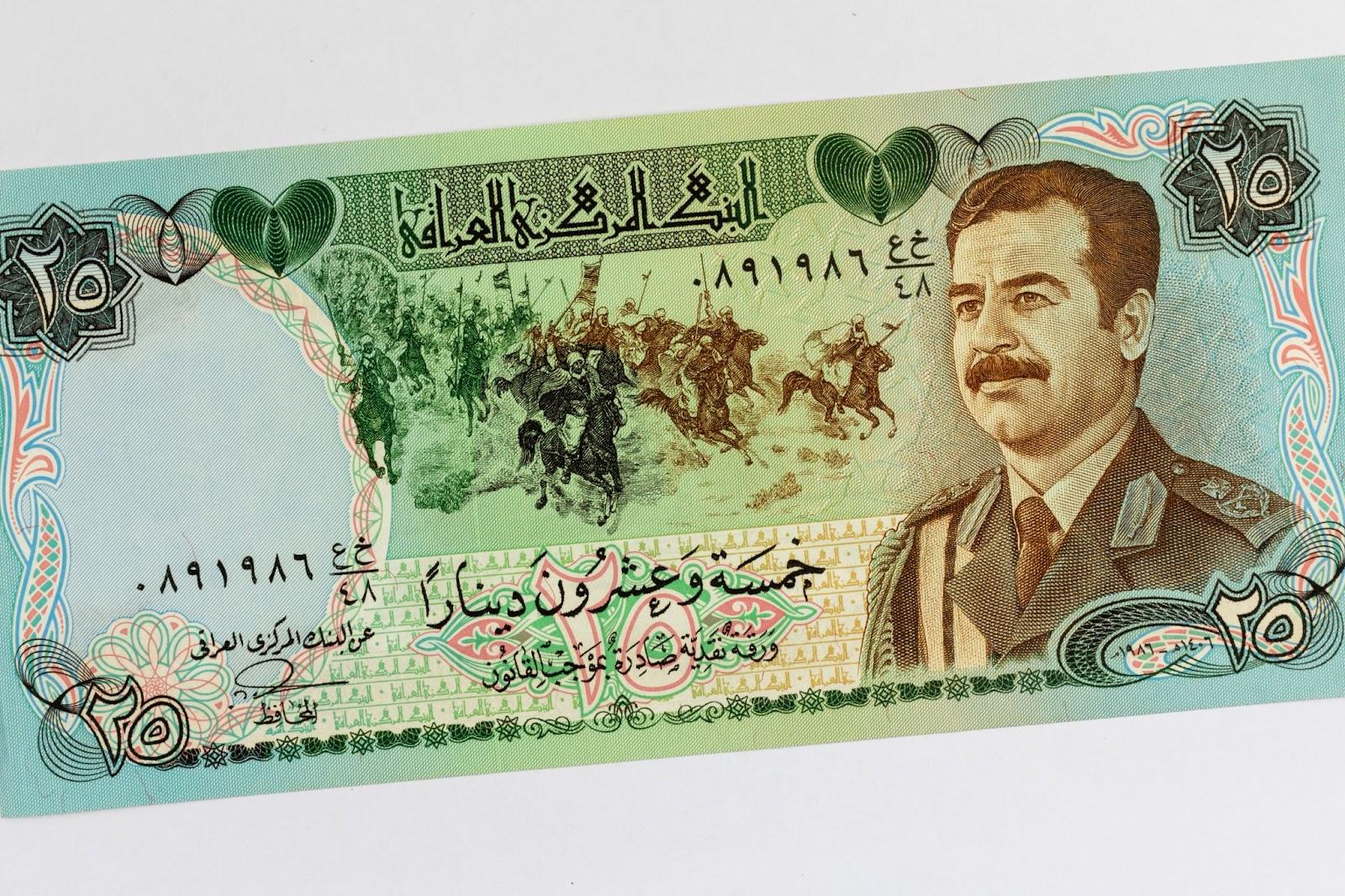
The Saddam Hussein era and currency instability
The 1980s ushered in a period of significant political instability, exacerbated by the Iran-Iraq War and the 1991 Gulf War.
Under Saddam Hussein, the Iraqi government turned to excessive government printing of Iraqi bank notes, drastically eroding the Iraq currency value.
This period introduced what came to be known as Saddam dinars, dinar notes bearing Saddam’s portrait.
Hyperinflation took hold, and the value of the Iraqi dinar IQD plummeted, making it practically worthless on the global forex markets.
At one point, so much iraq money was needed for daily necessities that banknotes were circulated in massive stacks, with little real purchasing power.
As faith in the iraq old currency waned, people turned to the United States dollar and the currency exchange black market for stability.
The disparity between the official exchange rate and street rates widened significantly.
The crisis also created opportunities for speculators and informal currency exchange companies to thrive in cities like Baghdad.
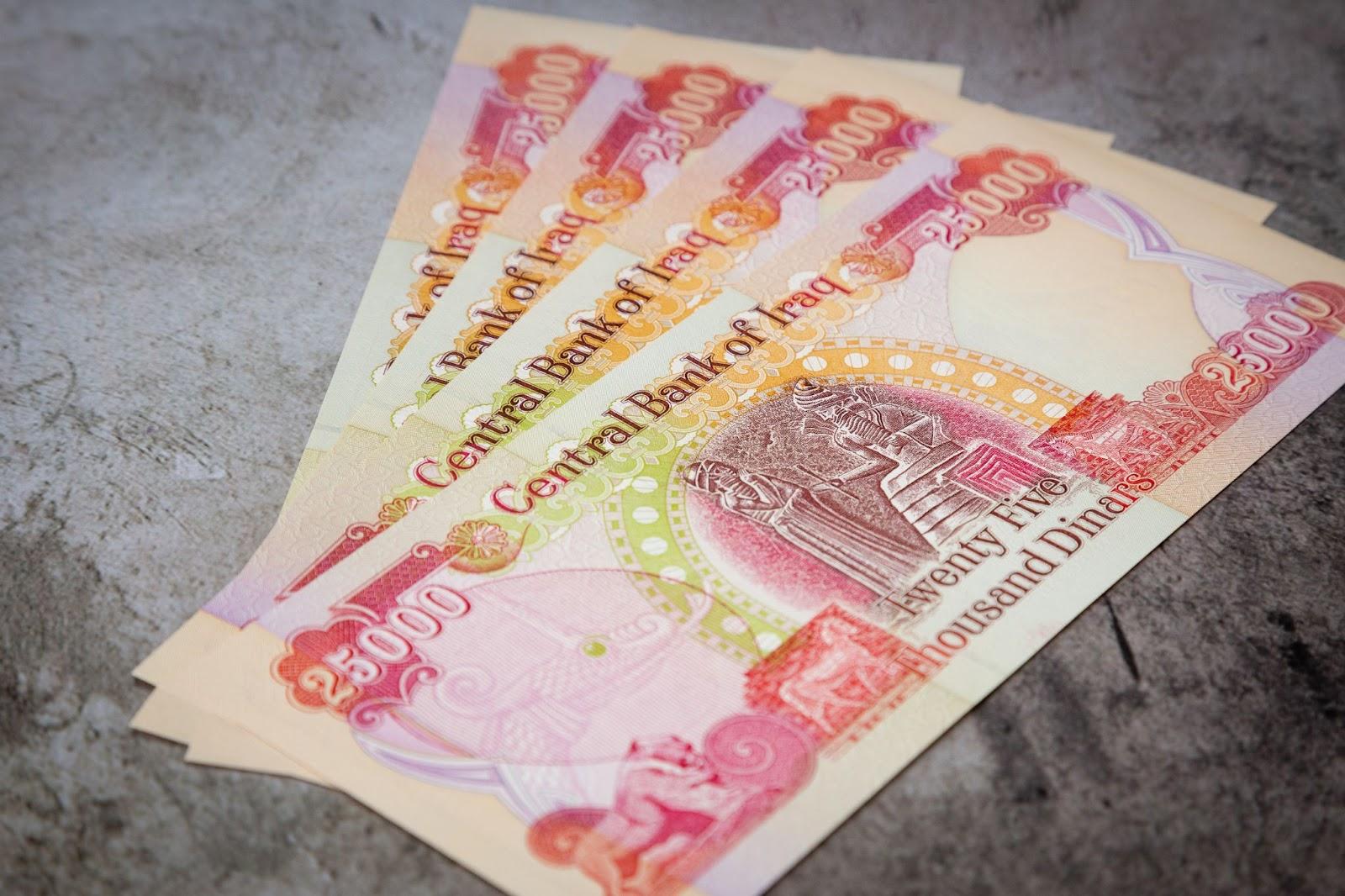
Post-war reform: The coalition and new banknotes
After the fall of Saddam’s regime in 2003, the Coalition Provisional Authority stepped in to stabilise the financial system.
A comprehensive overhaul introduced new banknotes and new dinar notes, excluding Saddam’s image and symbolising a fresh start.
The new currency designs were printed by De La Rue, a trusted United Kingdom-based firm known for its high-quality security features.
The Central Bank of Iraq took charge of issuing the iraqi dinar notes, embedding them with features like:
- Advanced security threads
- Watermarks including Arabian horses
- Colour-shifting ink and holograms
- Anti-counterfeit microprinting
These new Iraqi notes represented a concerted effort to improve political stability and regain public trust. The currency symbol is ع.
As a result, confidence in the iraq country currency began to return.
The Iraqi dinar exchange rate became more predictable, though it remained non-convertible on many International Monetary Fund platforms.
Still, progress was made. Iraq’s financial institutions worked to align with global standards, contributing to gradual economic growth.
Today, the currency of Iraq ranks modestly on currency rankings, but it continues to serve the country as a symbol of resilience.
Its status in currency rankings lists reflects a complex mix of geopolitical tension, post-war recovery, and gradual fiscal reform.
While the dinar does not yet freely float, it remains the legal tender and official currency.
Investors should take caution when interpreting the IQD to USD rate or the USD rate quoted on speculative sites.
Always use a reliable currency converter for live exchange rates.
To this day, the Iraqi government oversees the circulation of notes across the country.
Despite past setbacks, the continued use of the dinar is a testament to Iraq’s commitment to rebuilding its financial legacy from the ground up.
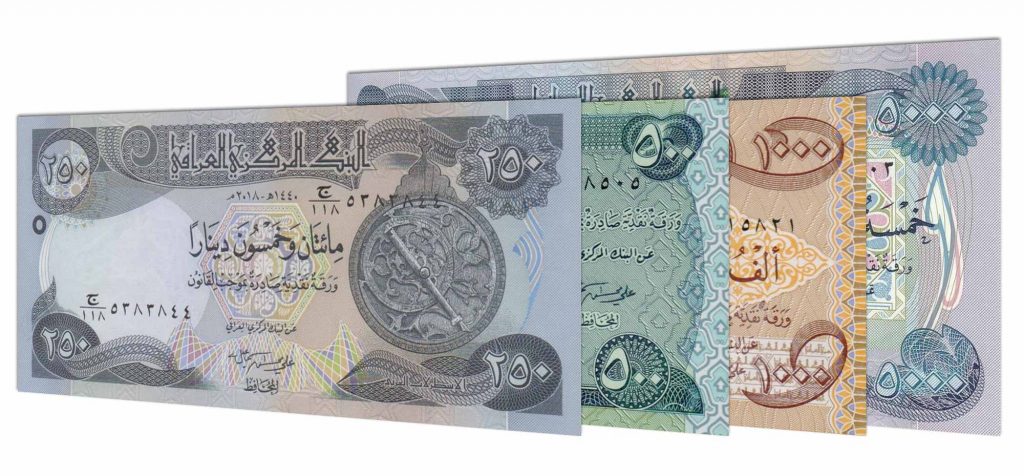
Iraqi banknotes
Like a well-travelled storyteller, the Iraqi dinar has its tales to tell. It comes in various denominations, each with its unique design and historical significance.
- 250 dinars: Features the spiral minaret of Samarra’s Great Mosque
- 500 dinars: Displays a Sumerian Lamassu, a mythological guardian
- 1,000 dinars: Showcases Baghdad’s al-Mustansiriya School
- 5,000 dinars: Includes Gali Ali Beg Waterfall from the Kurdistan region
- 10,000 dinars: Features Mosul’s historic Great Nurid Mosque
- 25,000 dinars: Displays a Hammurabi bas-relief
- 50,000 dinars: Illustrates the Tigris and Euphrates, with farmers and Iraq’s map
New dinar notes incorporate both Arabic and Kurdish text, highlighting Iraq’s diversity.
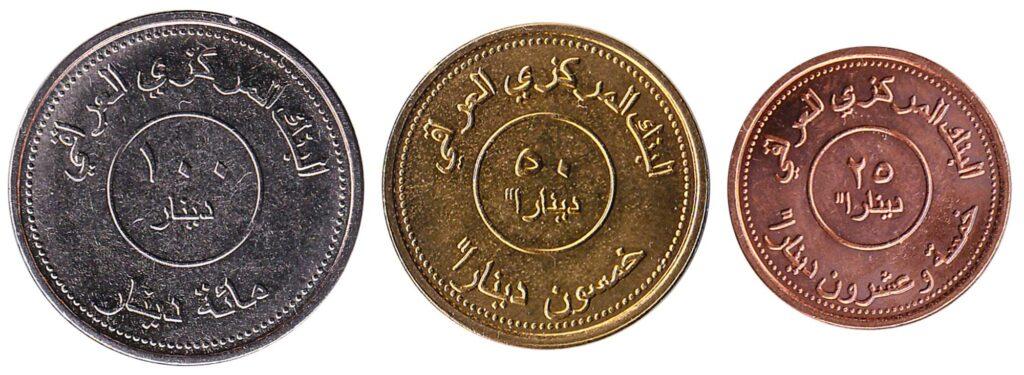
Iraqi coins
Iraq’s currency denominations include coins known as fils, though they’re rarely used now. Common denominations include:
- 25 fils: Copper-plated, features Iraq’s outline and major rivers
- 50 fils: Brass-plated, labelled “Iraq Central Bank”
- 100 fils: Silver-toned with inscriptions in Arabic
While coins may not be widely circulated, they’re still part of Iraqi money and represent the full spectrum of currency for Iraq.
Currency of Iraq – fascinating facts
Historical significance
Let’s dive into the fascinating story behind the name “dinar.” It’s not exclusive to Iraq. Many countries in the Middle East have their versions of the dinar.
Because of its popularity in these regions, you might think the dinar has deep Arabic, Persian, or Turkish roots.
But guess what? The name actually has its roots in Latin! “Dinar” comes from the Latin word for money, “denarius.”
Fun fact: Once upon a time, the currency of Iraq used to be one of the mightiest currencies on the planet! That’s because Iraq was sitting on a treasure trove of wealth.
People buy Iraqi currency for a peculiar reason
It’s important to know that stories about the dinar’s value matching the US dollar are false.
Be cautious of folks who say otherwise, as they might have less-than-honest intentions.
To be crystal clear, buying Iraqi dinars might not be the best move if you’re not planning a trip to Iraq.
The only time it might make sense is if you’re collecting them for their collectable value.
Hidden security features
Hold a banknote to the light, and you might spot a hidden surprise. The new Iraqi banknotes feature a watermark of the head of a purebred Arabian horse.
The Central Bank of Iraq took a proactive step to tackle counterfeiting concerns.
They added advanced security features to Iraqi currency notes to ensure they were the real deal. These include watermarks, security threads, and special inks.
Multilingual notes
The Iraq currency notes embrace the nation’s diverse languages, featuring both Arabic and Kurdish text. They are a way of celebrating the country’s diverse cultural identities.
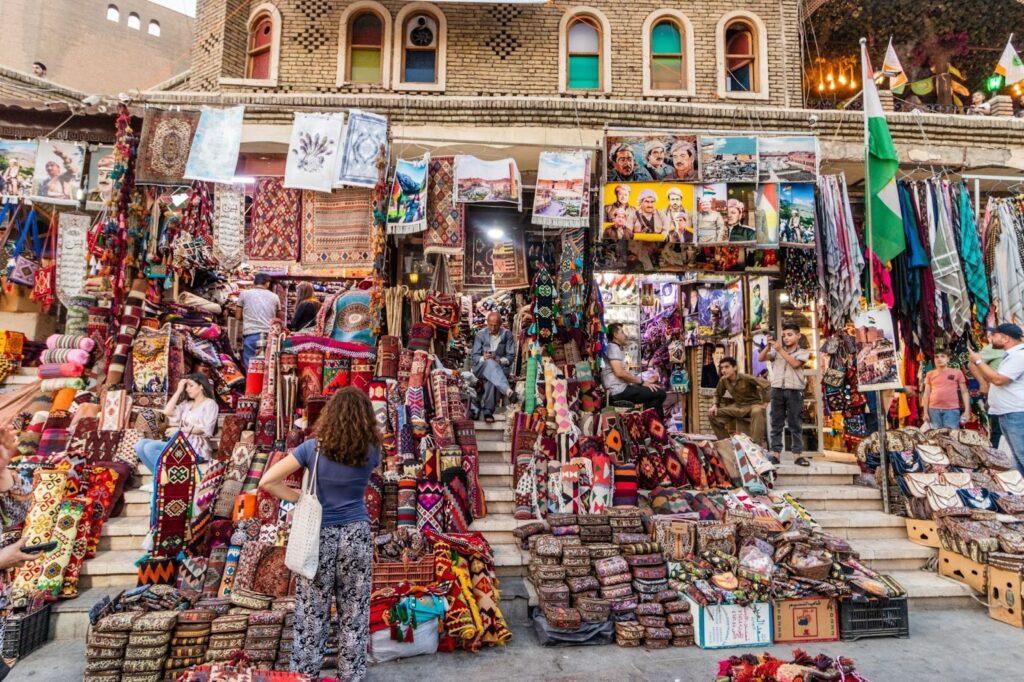
Can I buy Iraqi dinar in the UK?
If you’re looking to buy Iraqi dinars, you’re in the right place – Manor FX has the best exchange rates.
Order online, and we’ll deliver Iraq’s currency to your home or workplace fast, securely, and hassle-free.
It’s the best way to get your hands on Iraqi money before you travel.
If you prefer the personal touch, visit our travel money store in Datchett near Heathrow.
You can also order online and pick up your Iraqi travel money in person with our click and collect option.
If you want to convert British pounds to Iraqi dinars or vice versa? We’re here to help.
FAQs
Do you convert British pounds to Iraqi dinars at Manor FX?
Yes, buying Iraqi dinars is easy with Manor FX.
Want to get your hands on some Iraqi dinars hassle-free? We’ve got you covered!
You can now order them online and have them delivered securely to your doorstep or office via Royal Mail Special Delivery Guaranteed®.
If you’d rather swing by, you’re welcome to pick them up at our travel money shop near Heathrow. Just click here to buy Iraqi dinars online.
Do you convert Iraqi dinars to British pounds at Manor FX?
Do you have some leftover Iraqi dinars you’re looking to part with? No worries, we’ve got a solution for you!
Click ‘sell currency’ and select ‘IQD Iraqi dinar’. We’re offering great rates for your extra Iraqi dinars. Convert Iraqi dinars to British pounds now.
If you’ve got some Iraqi coins to spare, our friends at Leftover Currency can give you a hand. They’re experts and able to turn your leftover Iraq travel money into British pounds.
What is the current IQD to USD rate, and where can I check it?
The IQD to USD rate changes regularly based on market conditions, including global oil prices, political stability in Iraq, and overall demand.
For the most accurate and up-to-date figures, use XE’s currency converter tool to check the live exchange rate between the Iraqi dinar (IQD) and the US dollar (USD).
Is it a good idea to invest in Iraqi dinars?
While some foreign exchange platforms discuss the potential for the Iraqi dinar to rise in value, it’s important to be cautious.
Much of the buzz is fuelled by speculators, and claims of the dinar suddenly matching the USD rate or making investors rich overnight are often exaggerated.
Like any currency, the Iraqi dinar exchange rate is influenced by economic fundamentals, not rumours.
Unless you’re travelling to Iraq or collecting dinar notes, approach investing in dinars with care.